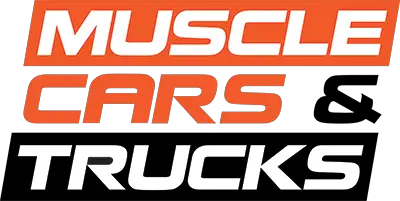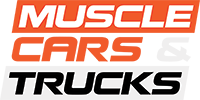In a bold display of innovation and performance, Mike Copeland, CEO of Arrington Hydrogen, unveiled the company’s latest hydrogen combustion creation at SEMA 2023.
In partnership with Team Throttle Monster, “Jurassic Attack” is a hydrogen-powered monster truck powered by a Procharged 540 ci Big Block Chevrolet engine tuned to deliver almost 1500 horsepower via hydrogen combustion. Copeland, who has already demonstrated the feasibility of zero-emission internal combustion engines has built another excellent proof-of-concept high-performance vehicle following his two previous hydrogen combustion projects, Zero, and Freebrid.
The powertrain and fuelling hardware are where this project showcases Arrington’s technical prowess. Starting with the engine, Copeland worked closely with DART Machinery, one of the top engine builders in the NHRA, and Comp Cams to create the right environment for hydrogen combustion to shine.

“Dart supplied the short block and heads. I worked with Comp Cams to create the camshaft. The monster truck has some specific requirements when it comes to performance to improve the engine performance with hydrogen and help eliminate reversion in the intake port,” Copeland told Muscle Cars and Trucks in an exclusive interview. “Comp custom ground the camshaft to my design. I don’t want to share specifics on the cam, but I will say the lobe centerline is very wide.”
Arrington also collaborated closely with PHINIA –a spin-off of BorgWarner’s Fuel Systems business– using the company’s M3.5 PFI H2 injectors geared toward commercial hydrogen combustion applications.
“To the best of my knowledge, no company has “production” hydrogen injectors available yet. The PHINIA injectors (PFI) are getting close to being released for production, but are still a way off. DI injectors are behind the PFI versions,” Copeland elaborated.
“The injectors I bought from PHINIA are the highest flow I have been able to find. Even with their size, I still need 3 per cylinder to reach our 1500hp target. The Bosch injectors in my [Zero] truck require 2 to make 500 hp.”

One of the interesting breakthroughs on the “Jurassic Attack” project deals with hydrogen fuel storage and hydrogen fuel lines. In Arrington’s past projects, the hydrogen fuel was stored in DOT-certified cylinder tanks, according to Copeland, the monster truck uses a completely different, prototype, “formable” fuel tank. In practice, the prototype fuel tank looks like a bunch of tubes or lines.
“It is a completely different design than typically used in hydrogen applications. We displayed the truck without the steel shell the tank fits in. This design allows us to fit the tank in locations that a cylinder tank would not fit.”
Moving the hydrogen from the tank into the fuel rail are lines specifically designed for use with hydrogen.
“The material was developed for the military. Our tank runs at 350 BAR (5000 psi). All lines are certified for four times that pressure (20,000 psi), and because of the material, hydrogen will not permeate through the lines. The tank control valve, pressure relief safety valve, and pressure regulator are from Westport Fuel Systems.”

One of the driving factors in the monster truck application is culling emissions, with many events being run in indoor stadiums carbon monoxide is of concern. Air quality is closely monitored and stadiums are required to keep large exterior doors open during the event to help circulate fresh air, even so, sometimes the events are shut down because air quality deteriorates. In this context, developing a high-performance engine with zero carbon emissions from the exhaust is huge. Now think about other high-profile indoor motorsports events like the Chilli Bowl or Stadium Supercross and the possibilities are incredible.
“The reality is, it would only take one law and all racing vehicles would have to meet current production emission requirements. Some believe this is part of the reasoning behind the RPM act. If this happened, it could eliminate racing as we know it.”
Detractors will often attempt to point out the possibility of high NOx emissions from hydrogen combustion. While typically associated with diesel combustion, NOx is a side effect of very lean combustion mixtures regardless of fuel. Hydrogen mixtures can be run extremely lean, with lambda numbers often higher than 2, with lambda of 1 equalling stoichiometric combustion.

“We have run EPA emission certification tests on my hydrogen-burning supercharged LS truck. Our testing proves we have zero carbon. Our NOx is extremely low. Without any exhaust after treatment, our highest recorded level happened at 2 points in the EPA US06 test at 0.083,” said Copeland.
“For most of the test, we have zero NOx as well. We are continuing testing and have a new system to test. Analytically, our NOx will be reduced to 0.014.
“We have run fuel mixtures as lean as Lamda 7. The ratios we typically run are a compromise between performance and emissions. Our actual numbers are a trade secret.”
Copeland’s decades-long expertise in horsepower and vehicle dynamics has propelled him to the forefront of innovation in the industry. With the automotive sector increasingly prioritizing emissions reduction and sustainability, Copeland’s vision for a hydrogen-powered future has never been more relevant.
“I believe hydrogen ICE will be a part of our “carbon neutral” future. There is not one answer that fits every need. Electric vehicles, Fuel Cell vehicles, and hydrogen ICE will all play a part in the future,” Copeland adds. “Toyota, BMW, Hyundai, Honda, GM, Ford, and others are all either planning production hydrogen ICE or working on it to see what can be done.”






